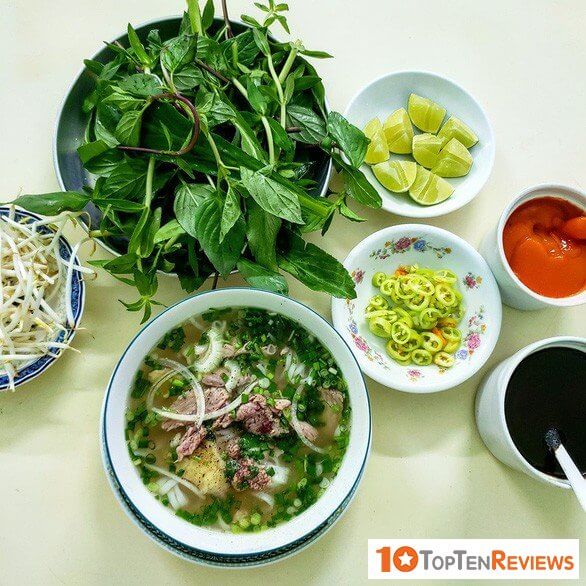When talking about Vietnamese food, perhaps pho is the name that always comes to mind first. Pho is a prevalent dish in Vietnam and is praised by many people. Although it is not a rare dish, the taste of pho always brings a warm and delicious feeling to any diners. This is really the perfect dish for the taste and sense of all Vietnamese people.
Pho - A unique traditional dish
Pho is a traditional dish of Vietnam, can also be considered as one of the most typical dishes for Vietnamese cuisine. The main ingredients of pho are rice noodle soup and broth (or "nước lèo," as it is called in the South) along with thinly sliced beef or chicken. In addition, there are also spices such as soy sauce, pepper, lemon, fish sauce, chili, etc... These spices are added depending on each user's taste. Pho is usually used as a breakfast dish or for dinner. In the southern provinces of Vietnam, pho is presented with additional ingredients called herbs such as onions, bean sprouts, coriander, and basil leaves. Coriander is the typical leaf of pho. Pho is usually beef noodle soup, chicken noodle soup, pork noodle soup, shrimp noodle soup, etc.
The broth is generally made by stewing beef bones, the meat used for pho is beef or chicken, and spices include cinnamon, anise, ginger, cardamom, cloves, coriander seeds, etc. "Banh pho," according to tradition. Traditional, made from rice flour, coated into thin sheets, and then cut into fibers. Pho always has to be eaten hot to be delicious. However, to get good bowls of pho depends on the experience and traditional secret of the pho cooking profession.
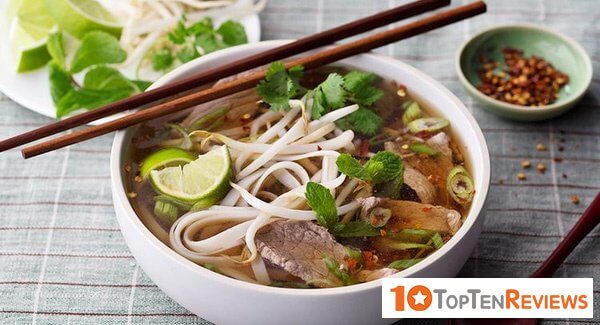
Origins and differences
Some theories suggest that pho first appeared in Nam Dinh, but Hanoi is where this rustic dish became famous today. Some other views see pho as a culinary feature of Ha Thanh. Pho originated in northern Vietnam, entering the central and southern regions in the mid-1950s, after the French defeat in Indochina and Vietnam was divided into two areas. The Vietnamese in the North immigrated to the South in 1954 with pho, and pho has begun to have differences. Nowadays, pho has different cooking methods and flavors.
In Vietnam, there are names to distinguish them: Pho Bac (in the North), Pho Hue (in the Central region), and Pho Saigon (in the South). Typically, the northern pho is characterized by a salty taste, while the South is sweet. Pho in the South is smaller than in the North. In the past, only cooked beef pho with a complete "ripe-corn-encrusted" bucket. Later, diners accepted both rare pho and chicken noodle soup. Going further, restaurants experiment with duck and geese meat but with little success. In addition, there are several dishes from traditional noodle ingredients such as pho roll, the type of pho that appeared in the 1970s was fried pho, in the 1980s was fried pho...
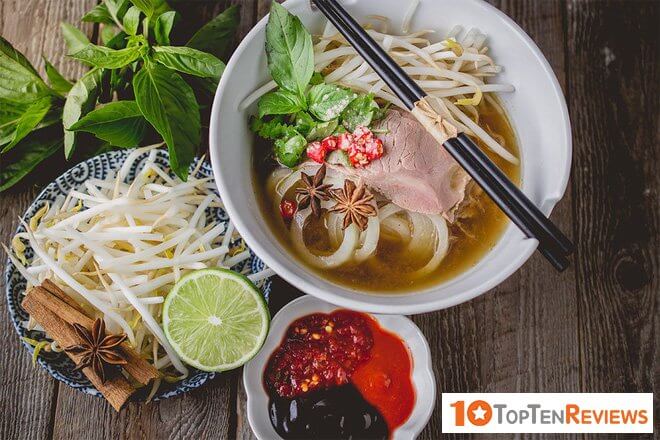
Pho culture
Vietnamese pho restaurants still keep the habit of rarely bringing menus to customers, but customers will have to choose what kind of pho (for example, beef noodle soup, chicken noodle soup...). Pho is served in a bowl. Usually, the dining tables are numbered to do, on which are available chopsticks, spoons, and condiments accompanying pho such as soy sauce, lemon, fish sauce, chili ...
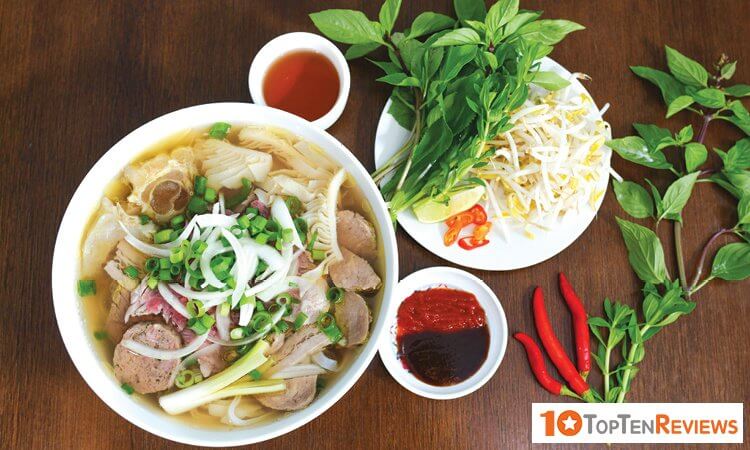
Diversity
In addition to the traditional processing methods, today, people also create many other types of pho such as pho rolls, pan-fried pho, stir-fried pho, beef noodle soup with satay,.... and pho the packaging industry such as instant noodles, vegetarian pho, industrial pho, etc. In Hanoi, it is common to eat pho with quail, while Saigon people only eat banh mi with porridge. Gia Lai people have dry pho, also known as "two-bowl pho," with small and tough noodles like My Tho noodles and a separate cup of broth.
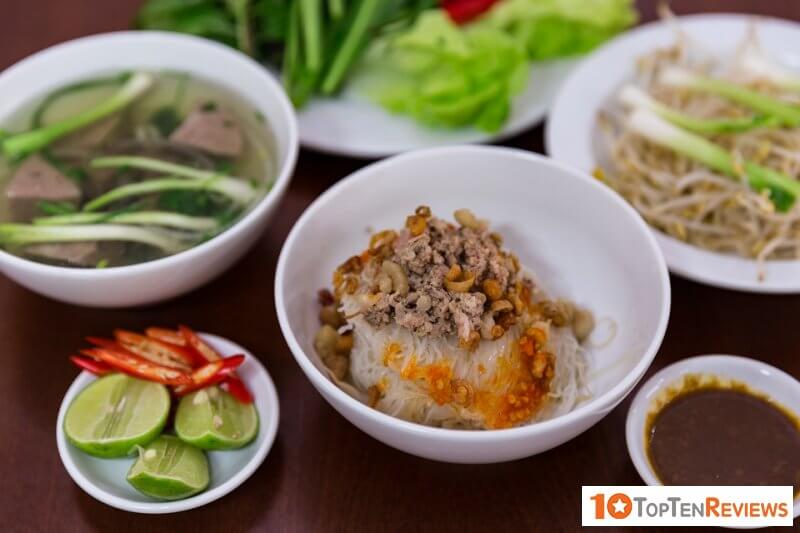
Pho in Hanoi
Writer Thach Lam wrote in the book Hanoi Hashed Sixty-Six Streets: "Pho is a special gift of Hanoi, not only in Hanoi, but because it is delicious only in Hanoi." Good pho must be "classic" pho, cooked with beef, "clear and sweet broth, flexible but not crumbly cake, crispy but not chewy fatty meat, chili lemon with onion is enough," "fresh herbs, Northern peppercorns, sharp drops of lime greens, and a little bit of ca Cuong, as light as a doubt."
In the 1940s, pho was very popular in Hanoi: "It is an all-day snack for all kinds of people, especially civil servants and workers. People eat pho in the morning, eat pho at lunch, and eat pho at night…"
In Hanoi, pho is a special dish of Hanoians who do not know since when. Pho is used exclusively as a breakfast or lunch and dinner gift, not eaten in other words. The broth of pho is made from the broth of beef bones: lump bone, tubular bone, and clavicle. Meat used for pho can be beef or chicken. Pho must be thin and soft. The seasoning of pho is green onion, pepper, chili vinegar, sliced lemon. Pho shops in Hanoi have been handed down for three generations, such as Pho Phu Xuan on Hang Da Street, originally from Phu Gia, Phu Thuong, Tay Ho, Hanoi villages; North-South pho on Hai Ba Trung street; Nam Ngu Chicken noodle soup; ...
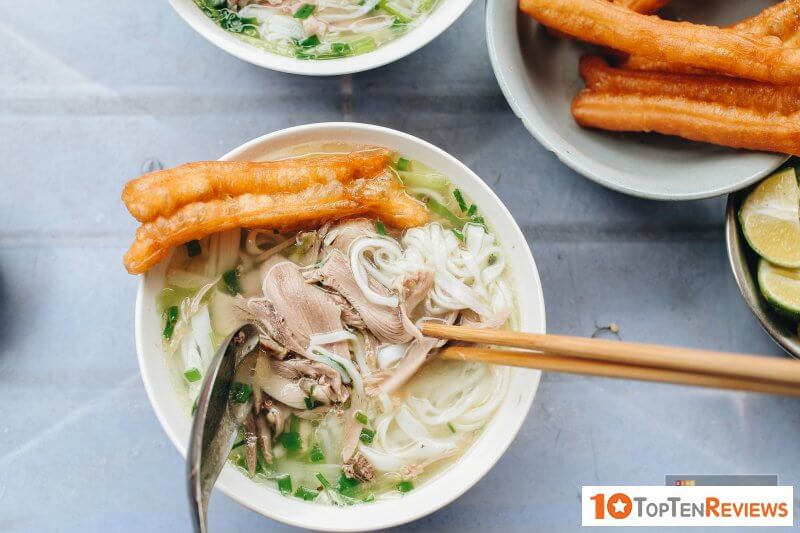
Nam Dinh Pho
Nam Dinh Pho is a popular dish of Nam Dinh. Nam Dinh pho also has the same characteristics as pho in other regions, including rice noodle soup, pho broth, beef or chicken, and some accompanying condiments. However, with a vast difference that is hard to mistake, Nam Dinh noodle soup is a particular type with delicious and soft microfiber, different from other regions. The beef is thinly sliced, pounded, dipped, and picked up at the right time, so it is smooth to eat but still retains the freshness and nutrition of the meat… And when it comes to water, it is often an "heirloom" to the workers. Pho often hides the secret of making pho broth and only passes it on to the next generation in the family.
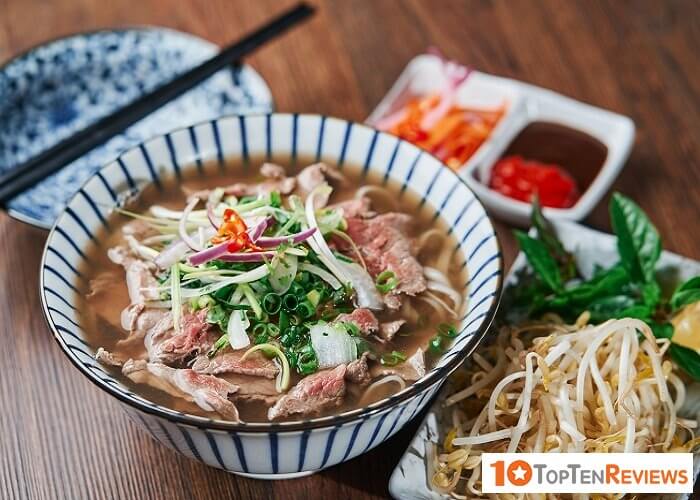
Pho Saigon
The Vietnamese in the North immigrated to the South in 1954 after the Geneva accords, bringing with them pho and pho started to have differences. In the South, especially in Saigon, beef in pho is usually sold in 5 styles: cooked, rare, encrusted, bucket, tendon depending on the taste of the customer, in addition to 1 cup of fatty water (the fat of beef bones) ) to separate if guests want.
Pho in the South is usually sold with sweet soy sauce (black sauce), red chili sauce and lemon, fresh chili, coriander, basil, bean sprouts (boiled or eaten raw), thinly sliced onions (can be eaten raw) pickled with vinegar). Those are the must-have vegetables, usually placed separately in a plate or basket sold with each bowl of pho. Guests can take whatever they like and put it in their own bowl. Later, many shops also added to that plate of vegetables: cilantro (coriander), Lang basil, long scallions, other herbs…. Pho broth (soup) usually does not have MSG (main noodles) like in Hanoi and has a slightly cloudy color, not transparent like Pho Bac, sometimes sweeter, fatter, and cooked with chicken bones, adding dried squid or squid. Grilled onions and grilled ginger.
There were quite a few famous pho restaurants in Saigon before 1975: Pho Cong Ly, Pho Tau Bay, Pho Tau Thuy, Pho Ba Dau, Pho Pasteur street (with a lot of noodle shops specializing in beef noodle soup), Hien Vuong Pho street ( specializes in selling chicken noodle soup). There are currently famous Pho 24, Pho 5 star, Pho Quyen, Pho 2000, Pho Hoa…
